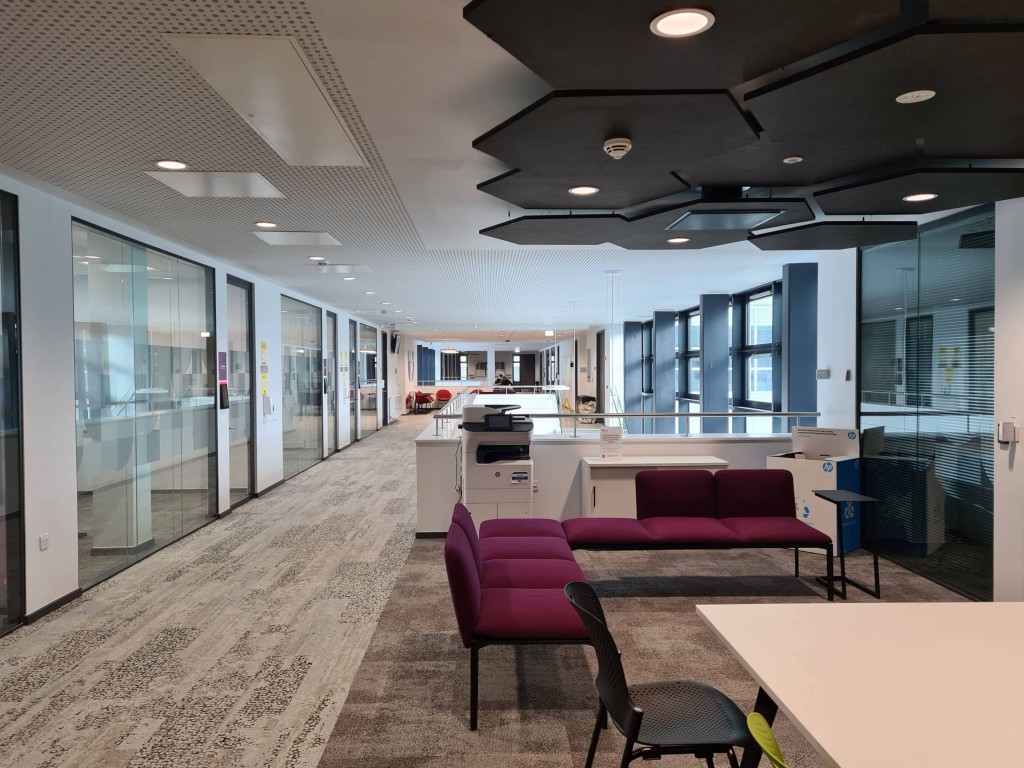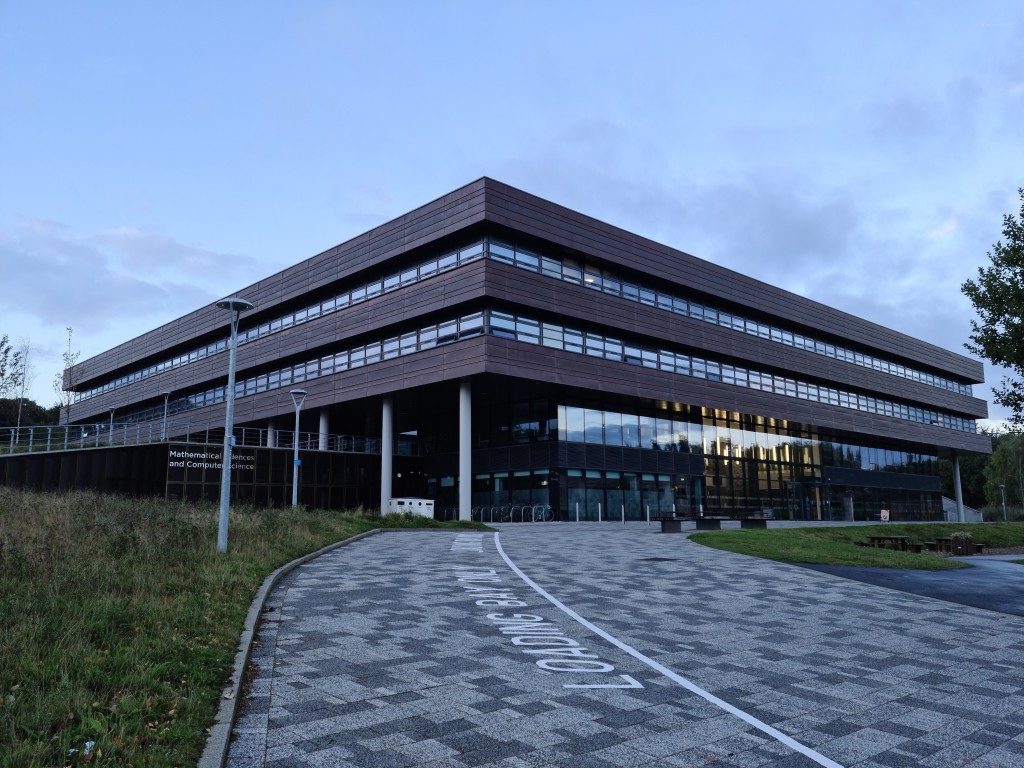Navigating the heat waves

Mark Grayston, Product Strategy and Delivery Manager at Mitsubishi Electric, explains why efficient cooling for buildings must be a core focus.
Climate change is making heat waves more frequent, hotter and longer. In fact, new data from the EU’s Copernicus Climate Change Service reveals that April 2024 was the hottest month on record and the 11th consecutive month of record heat.
As the summer months are just around the corner, and record-breaking temperatures are becoming the norm, it’s important to explore how best to keep the population safe and comfortable in a heat wave ahead of time. This means finding ways to mitigate both rising temperatures and the heat in our cities.
While air conditioning emerges as the solution to address immediate comfort needs, it doesn’t always align with long term sustainability goals. As we combat global warming, it’s vital to move towards approaches that promote much needed cooling practices while supporting the UK in its transition to Net Zero.
Embracing simultaneous heating and cooling
As individuals try to adjust to a changing climate, air conditioning units are becoming the new ‘must-have’ equipment to combat the heat. In fact, sales of air conditioning units increased by more than 500% during the 2022 heatwave, and searches for homes with air conditioning on Rightmove tripled over the same period of time – and we can only expect this trend to grow as temperatures continue to rise.
The challenge with this growth is the potential surge in electricity and energy use in the summer months, countering the work the UK has done in the winter to decarbonise heating. So, although it isn’t possible to stop homeowners from installing air conditioning technology to keep cool, there are alternative approaches to consider. Many homeowners conflate ‘air conditioning’ with cooling,
but air conditioning units can also supply heating. So, a system that offers both heating and cooling could be a way to reduce the number of gas boilers needed.
It also creates a single delivery source, which reduces embodied carbon, and air conditioning is often the most efficient way to deliver heat into a space.
At the same time as offering more environmentally friendly cooling in the summer, this would also help the UK to boost its heat pump uptake and move away from gas and oil heating for the long term.
The benefits of passive solutions to building design
It is always the case that the most efficient unit of energy is the one that we don’t use. The UK is getting hotter, but turning to air conditioning systems should not be the only solution. Building design also has a role to play, and if done correctly, homes that are built now will be resilient in the future.
Architects around the world are now designing homes and buildings with passive solutions to mitigate increasing temperatures and more frequent heat waves. New materials, advanced heat modelling techniques and historically proven principles are all showing that even when temperatures hit unexpected highs, homes and buildings in the UK will be able to stay cool with natural airflow whilst remaining sustainable.
For example, buildings can have a more manageable temperature by using lighter building materials to insulate, such as wood and avoiding heavy stone and masonry. External blinds also keep out around 90% of heat from a home, and external shading can be as simple as parasols, awnings, trellis, trees, shutters or external blinds. Simple design techniques such as setting windows deeper into the reveals or having larger overhangs on the roof are other straightforward and relatively cheap tweaks that architects can employ to keep homes cooler. White external walls will also reflect the sun’s heat, green living walls will provide shade, and high ceilings, concrete floors and stone walls will all help mitigate an unwanted temperature rise.

Elevating cooling efficiency: sustainable solutions for commercial spaces
As well as the UK’s housing stock, commercial spaces, such as offices, gyms, university buildings, hotels, and restaurants, all need to stay cool and keep building occupants safe.
Many commercial spaces today are working toward ambitious sustainability targets, with plans in place to reduce emissions over the coming years. Where comfort cooling is an essential for guests or occupants, opting for air conditioning systems that minimise the use of refrigerants and using refrigerants with the lowest global warming potential (GWP) where it is required are ideal.
For example, Durham University chose Mitsubishi Electric’s City Multi Hybrid VRF air conditioning system as part of its journey to being one of the most sustainable universities in the UK. The water based air conditioning system uses water to transfer heating and cooling instead of refrigerant in the majority of the pipework in order to reduce environmental impact. The system only uses lower GWP R32 refrigerant where necessary.
This has also supported the university’s environmental goals by providing heat recovery to meet the need for simultaneous heating and cooling. By distributing surplus heat from cooling operations such as computer rooms to spaces where heating is needed, it’s possible to achieve energy savings of up to 30% over conventional systems.
The commercial sector must also be aware of changing regulations around the systems installed in their buildings – this includes regulations on cooling equipment. By opting for the hybrid cooling system, Durham University has ensured that it complies with the phasing down of F gases – and that the system is future-proofed for years to come.
Regulations such as BS EN378 are also important to consider, as they mean that leak detection equipment – which can be expensive to install and maintain – may be required alongside conditioning systems. However, leak detection isn’t required in these spaces as water replaces refrigerant in the Hybrid VRF system to transfer heating and cooling around the building.
Closing thoughts
While we navigate the complexities of climate change, moving towards cooling solutions that both respond to individuals’ need for comfort and help achieve the country’s sustainability goals is critical. In particular, passive building design offers a holistic approach that not only enhances comfort but also reduces energy consumption and environmental impact. For even better outcomes, such a strategy can be combined with innovative systems which are capable of simultaneously providing heating and cooling to reduce reliance on energy-intensive processes and advance the transition to Net Zero emissions.
As we’re about to transition from the enjoyable warmth of spring
to the hot summer months, let’s not forget that relying on cooling technologies must go hand in hand with maximising energy efficiency – only then will the UK position itself as a leader in the path to Net Zero.







